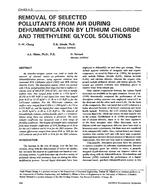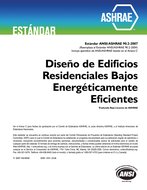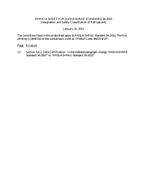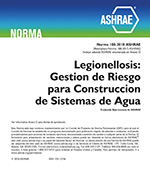Description
An absorber-stripper system was used to study the removal of selected indoor air pollutants during the dehumidification process, using aqueous solutions that contained 95% triethylene glycol (TEG) and 40% lithium chloride (LiCl). The absorption system, which was packed with 5/8-in polypropylene flexi rings that had a surface-to-volume ratio of 104 ft2/ft3 (342 m2/m3), was able to handle air flow rates that ranged from 0.934 to 1.874 kg/m2•s (0.192 to 0.385 lb/ft2•s) and liquid flow rates that ranged from 8.67 to 15.18 kg/m2•s (1.78 to 3.12 lb/ft2•s) for the LiCl-water solution. For the TEG-water solution, the air flow rates ranged from 0.836 to 1.338 kg/m2•s (0.172 to 0.275 lb/ft2•s), and the liquid flow rates ranged from 5.84 to 10.85 kg/m2•s (1.20 to 2.23 lb/ft2•s). The removal of formaldehyde, toluene, carbon dioxide, and 1,1,1-trichloroethane using these two solutions is discussed. The mass transfer coefficient was measured over a wide range of flooding conditions. The heights of transfer units calculated from mass transfer coefficients at 50% flooding are 0.36m for the LiCl solution and 0.14m for the TEG solution. The column efficiencies ranged from about 65% to 70% for the LiCl solution and from 90 to 95% for the TEG solution.
KEYWORDS: air pollution, indoor, contaminants, dehumidifying, contaminants, formaldehyde, carbon dioxide, lithium chloride, air flow rate, absorptivity, desiccants, comparing.
Units: Dual
Citation: Symposium, ASHRAE Transactions 1993, Vol.99, pt.1
Product Details
- Published:
- 1993
- Number of Pages:
- 8
- File Size:
- 1 file , 820 KB
- Product Code(s):
- D-18189




